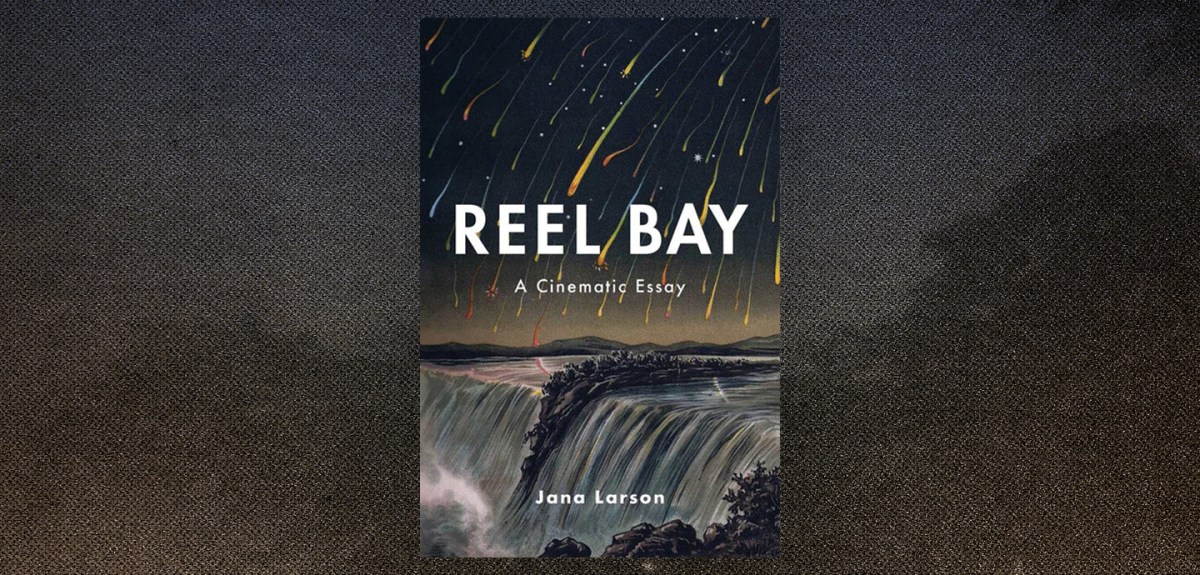[ad_1]
In November 2001, a Japanese woman named Takako Konishi was found dead in the woods near Detroit Lakes, Minnesota, not far from the border with North Dakota. According to a local newspaper article, she was believed to have frozen to death while searching for the ransom money buried in a snowbank at the end of the Coen Brother’s 1996 film Fargo. Jana Larson, a Minnesota native in film school in San Diego at the time, became obsessed with Takako’s story and spent years trying to make a film about it. Though it never manifested as a film, she has chronicled the experience in her debut book Reel Bay: A Cinematic Essay.
Reel Bay is an essay in the original meaning of the word – an attempt to bring together the disparate threads that swirl around Larson’s obsession with Takako’s death. Part mystery, part memoir, part film criticism, and part travelogue, Reel Bay intersperses its nonfictional narrative with scripts from Larson’s own screenplays. Throughout the book, the author refers to herself in the second and third-person, creating a sense of a semi-fictional world within the essay. The reader finds herself not just following along on Larson’s journey to understand Takako but also imagining possible pasts for the woman at the center of the mystery.
Tempting as it may be to dismiss Takako early on as a delusional person who couldn’t discern between truth and fiction, the reality is more complex, and Larson points out that Fargo lends itself to this confusion, with a title card claiming that its fictionalized material is “a true story.” Digging deeper into this on a trip to Minnesota, Larson interviewed those who had direct contact with Takako and found further reasons to doubt the motives ascribed to her in the original newspaper article. Takako spoke very little English and communicated mostly through an interpreting device she carried with her. Over the course of Reel Bay, it becomes more and more clear that something vital has been lost in translation.
A good deal of the difficulty in discerning Takako’s motives is cultural. Larson travelled to Japan for research, where she became acutely aware of her outsider status, and never quite emerged from the fog of intercultural confusion. She was suspicious from the start of the Minnesota police’s conclusion that Takako’s death was essentially a suicide, but in Japan, she learned that women travelling alone are often assumed to be planning to kill themselves. Yet the central question – why fly all the way to the United States to die in the woods of Minnesota? – remains unanswered. Certainly part of Takako’s appeal for Larson is her unknowability, her inner life as blank as the snow that Larson imagines filming her against.
I don’t think it’s spoiling too much to say that Larson, in spite of her intensive efforts, never gets to the bottom of what happened to Takako. The pleasure of reading this essay is in the search, and in Larson’s precise, clear-eyed prose:
This is how obsession works. A thought becomes an obsession when you don’t want to think it, when you want to get rid of it. Perhaps this is how Fargo, or Fargo, became an obsession for Takako. Fargo demanded something from her, despite anything she wanted or did not want.
Larson herself is aware that Takako has become for her a “mirror,” “a doppelganger,” and a “Rorschach test” in which she can at best see her own distorted reflection. Like Takako, she found herself in a large city, displaced from a more provincial background, and, like Takako, abandoned by an indifferent romantic partner. But ultimately, Larson’s obsession with Takako seems to involve something deeper and less determinate, the intuition that Takako was searching for something that she never found – and died in pursuit of.
Though its purported subject remains a cipher, this is an enthralling read that is ultimately about how to make art out of the raw fuel of experience. Reel Bay may be a record of Larson’s failure to render Takako’s story onto the screen, but as an essay, it succeeds at posing thought-provoking questions about the blurred lines between truth and fiction.

NONFICTION
Reel Bay: A Cinematic Essay
By Jana Larson
Coffee House Press
Published January 19, 2021
[ad_2]
Source link
